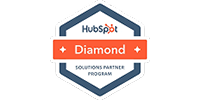The future of marketing in 2025: What you need to know
The marketing landscape is undergoing a seismic shift. The strategies that propelled businesses forward in the past decade are rapidly becoming obsolete, necessitating a fundamental redesign of sales and marketing programs. This transformation is driven by the end of the zero-interest-rate environment and the need for greater efficiency and higher returns on invested capital. As you go about planning budgets and revenue forecasting for the year ahead, here is what you and your team need to keep in mind.
The Need for Fundamental Redesign
The core argument for the future of marketing in 2025 is clear: organizations must fundamentally redesign their sales and marketing programs. The strategies that worked over the past decade, when we were in a zero-interest-rate environment, are no longer viable. In the past, with capital being cheap, both investors and organizations prioritized growth, often at financially inefficient rates of return. Now that we have exited that period, businesses globally are compelled to reconstruct their sales and marketing functions to achieve greater efficiency and generate higher margins and returns on invested capital.
This redesign is crucial for several reasons:
- Cost Reduction: By eliminating redundancies and streamlining processes, redesigned teams can significantly reduce operational costs.
- Improved Efficiency: Shared goals, data, and technologies allow for more efficient use of resources and faster decision-making.
- Enhanced ROI: Aligned efforts lead to more targeted campaigns and better-qualified leads, improving the return on marketing investments.
- Better Capital Allocation: With a unified approach, businesses can more effectively allocate capital to the most promising growth opportunities.
Adopting a Data-First Approach
To achieve this fundamental redesign, companies need to adopt a data-first approach in building sales and marketing programs. The rise of predictive analytics and AI will play a crucial role in driving this transformation. Advanced data modeling and AI-powered algorithms will enable marketers to anticipate customer needs, personalize their outreach, and maximize the impact of their campaigns while optimizing resource allocation.
By leveraging predictive analytics and AI correctly, sales and marketing teams can collaborate more effectively, identifying the most promising leads, optimizing their outreach, and closing deals more efficiently. This data-driven approach will keep you ahead of the competition, delivering exceptional customer experiences, and crucially, achieving higher margins and returns on invested capital.
Leveraging AI and Technology for Transparency and Automation
With the rapid advancements in AI and technology, sales and marketing leaders now have the opportunity to create transparency and automation where there was previously opacity and reliance on manual human input. This transformation allows for the design of more efficient sales and marketing programs that make better use of capital, whether in terms of labor, data, or technology.
The implementation of AI and automation will be critical in several areas:
- Lead Scoring and Prioritization: AI can analyze vast amounts of data to identify the most promising leads, allowing sales teams to focus their efforts more effectively.
- Personalized Content Creation: AI-powered tools can generate personalized content at scale, improving engagement rates and conversion.
- Customer Journey Mapping: Advanced analytics can provide deeper insights into the customer journey, enabling more targeted and effective marketing strategies.
- Performance Tracking and Optimization: AI can continuously analyze campaign performance, making real-time adjustments to optimize results.
Clay Implementation and Management Services
Collaboration with Finance for Optimal Returns
It is crucial for organizations to collaborate closely with CFOs and finance departments to understand the required rate of return on capital invested in sales and marketing. This understanding should then guide the application of the most statistically sound methods for driving demand, building pipeline momentum, and ultimately retaining customers.
This financial insight should guide the application of statistically sound methods for driving demand, building pipeline momentum, and retaining customers. By aligning marketing strategies with financial goals, organizations can ensure that their marketing efforts not only drive growth but do so in a manner that maximizes returns on invested capital.
The Human Touch in a Data-Driven World
While technology, data, and financial efficiency will play increasingly dominant roles in marketing, the human element remains essential. The most successful marketing strategies strike a delicate balance between digital optimization, financial acumen, and personalized, empathetic engagement.
Customers still crave genuine connections and personalized experiences. Marketing teams that can integrate data-driven insights and financial considerations with a human-centric approach will be poised to build long-lasting, profitable relationships with their customers. This balance of efficiency and empathy will cultivate trust, loyalty, and advocacy - essential ingredients for success in the coming years.
To achieve this:
- Use data to inform, not replace, human creativity
- Blend AI-powered systems with human interaction
- Personalize messages using analytics, but craft core content manually
- Combine predictive analytics with human strategic decision-making
- Balance quantitative metrics with qualitative feedback
- Train employees in both technical and emotional intelligence skills
This approach integrates data-driven insights with human-centric marketing, fostering trust and loyalty while maintaining efficiency.
Conclusion
As we look ahead, the future of marketing in 2025 will be defined by a fundamental redesign of sales and marketing programs, the adoption of a data-first approach, and the leveraging of AI and technology for transparency and automation. All of these elements must be underpinned by a strong focus on financial performance and return on investment.
The strategies that worked in the past decade’s cheap capital and growth-at-all-costs mentality are no longer viable. Organizations must reconstruct their sales and marketing functions to achieve greater efficiency and generate higher margins. By embracing these changes and aligning closely with financial objectives, businesses can create more efficient and effective marketing programs that are poised for success in the new economic reality. Are you ready to lead the way in this new era of efficient, effective, and financially savvy marketing?
2025 Marketing Trends FAQs
- What are the key marketing trends expected in 2025? In 2025, marketing is expected to be driven by artificial intelligence (AI), personalized customer experiences, and automation. AI-powered tools will enable more precise targeting, improve content personalization, and streamline campaign management. Additionally, customer expectations for tailored interactions will push brands to leverage predictive analytics and hyper-personalized marketing strategies.
- How will AI transform digital marketing strategies by 2025? AI will revolutionize digital marketing by automating processes such as ad targeting, lead scoring, and content generation. AI-driven insights will allow marketers to create more effective campaigns with real-time adjustments. AI-powered chatbots and virtual assistants will also enhance customer engagement by providing instant, data-driven responses.
- What role will big data play in marketing by 2025? Big data will be crucial for optimizing marketing efforts by offering deep insights into customer behavior, preferences, and purchasing patterns. Advanced data analytics will help businesses predict trends, personalize campaigns, and improve ROI by allocating resources more efficiently.
- How important will personalized marketing be in 2025? Personalized marketing will be more critical than ever as consumers expect customized experiences. AI and machine learning will allow businesses to deliver hyper-personalized messages, product recommendations, and offers based on real-time customer data, significantly increasing engagement and conversion rates.
- What are predictive analytics, and how will they impact marketing in 2025? Predictive analytics uses historical data, AI, and machine learning to forecast future customer behaviors. In 2025, predictive analytics will help marketers anticipate demand, optimize pricing strategies, and improve customer retention by offering proactive and relevant engagement.
- How will digital assistants influence consumer interactions with brands in 2025? AI-powered digital assistants will become more advanced, providing consumers with tailored recommendations, automating purchases, and offering customer support. As voice search and AI assistants become more integrated into daily life, brands will need to optimize their content for conversational AI.
- What ethical considerations should marketers be aware of with AI integration in 2025? As AI becomes more prevalent in marketing, businesses must address concerns related to data privacy, algorithmic bias, and transparency. Ethical AI use will be crucial for maintaining consumer trust and ensuring compliance with evolving data protection regulations.
- How will the integration of AI in marketing affect employment in the industry by 2025? AI will automate repetitive tasks, but human creativity, strategic thinking, and emotional intelligence will remain essential. Marketing professionals will need to adapt by developing skills in AI management, data analysis, and customer experience strategy.
- What are some potential challenges of adopting AI in marketing by 2025? Companies may face challenges such as ensuring data accuracy, managing AI-driven decision-making, balancing automation with human touchpoints, and addressing consumer concerns about AI-driven content personalization.
- How can businesses prepare for the future of marketing in 2025? Businesses should invest in AI-powered tools, develop data-driven marketing strategies, train teams in AI and analytics, and prioritize customer-centric approaches. Staying ahead of digital trends and integrating emerging technologies will be key to maintaining a competitive edge.










